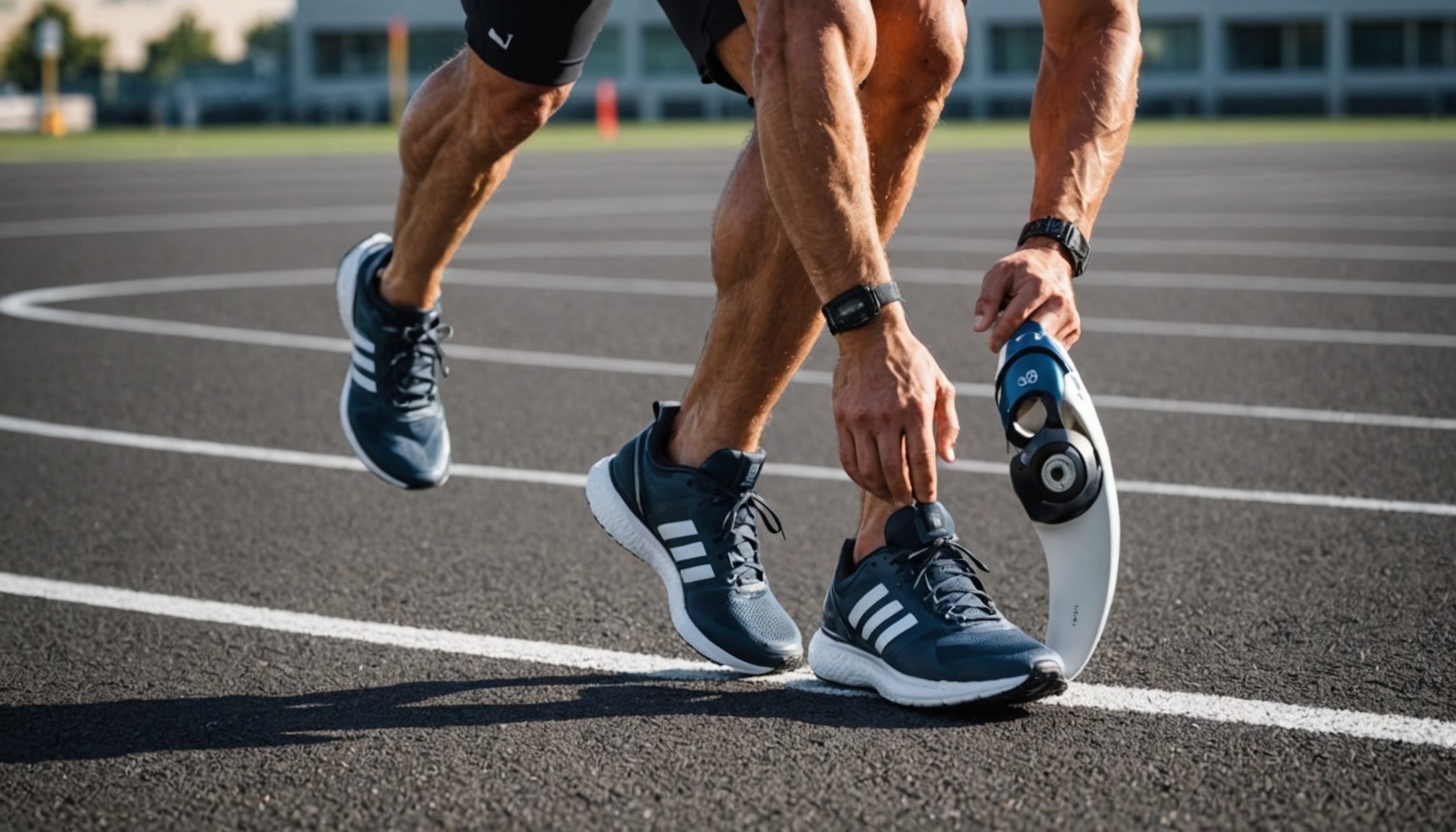Overview of Ultrasonic Bone Stimulation
Ultrasonic bone stimulation has become a vital tool in athlete recovery, offering a significant advantage with its non-invasive nature. By utilising high-frequency ultrasonics, this technology accelerates bone healing and enhances tissue regeneration. Its development can be traced back to the 1950s, with continuous advancements increasing its effectiveness and accessibility in sports medicine today.
The mechanism operates by emitting low-intensity, pulsed ultrasonic waves that penetrate the bone tissue, which stimulates cellular activity, enhancing the natural healing processes. This stimulation encourages the production of growth factors and proteins essential for bone regeneration and tissue repair. Its applications are especially beneficial for athletes, who often require enhanced recovery techniques after sustaining injuries.
This might interest you : Unlocking the advantages: how multisport involvement boosts children’s motor skills development
As the relevance of this technology in sports medicine continues to expand, it supports quicker recovery, allowing athletes to return to their sport sooner. Moreover, it plays a preventative role by strengthening bones, thus reducing the risk of future injuries. Understanding the historical context of ultrasonic bone stimulation highlights its journey from experimental therapy to an essential part of modern sports medicine.
Mechanisms of Action
Within the realm of bone regeneration, ultrasonic waves are a game changer, demonstrating a profound impact on cellular activity and the overall healing process. The mechanism involves low-intensity, pulsed ultrasonic waves penetrating deep into bone tissues. This process is crucial because it stimulates the cellular activities necessary for efficient bone and tissue recovery.
One pivotal effect of ultrasonic stimulation is the increased production of essential proteins and growth factors that play a significant role in bone reconstruction and repair. This biological response is advantageous, as it enhances natural healing capabilities. The response of bone structures to these waves is particularly notable, as they encourage new cell formation and support existing cell function, promoting faster recovery.
When comparing ultrasonic stimulation to natural healing processes, a remarkable difference emerges. The primary advantage of ultrasonic methods over naturally occurring processes lies in their ability to expedite healing considerably. Without this stimulation, recovery can be slower and less effective, particularly for athletes who aim for rapid restoration of function. This comparative advantage highlights the necessity and efficacy of incorporating ultrasonic bone stimulation in therapeutic protocols for optimal recovery.
Benefits for Athletes
Ultrasonic bone stimulation provides remarkable benefits for athlete recovery, playing a crucial role in both enhanced recovery and injury prevention. One of its significant advantages is the improved recovery times for fractures and soft tissue injuries. By expediting the healing process, ultrasonic stimulation allows athletes to resume their training regimens faster than traditional methods.
The technique not only reduces downtime but also increases the potential for athletes to return to their sport at a pre-injury performance level. This is particularly beneficial in competitive scenarios where rapid recovery is paramount. Athletes often face pressure to recover quickly from injuries to maintain their competitive edge; therefore, the quicker healing offered by ultrasonic methods cannot be overstated.
Case studies have illustrated remarkable successes, with athletes experiencing faster recovery and reduced pain from various sports injuries. For instance, professional athletes have reported significant improvements in healing times when employing ultrasonic bone stimulation as part of their rehabilitation programs. By incorporating this cutting-edge technology, sports medicine practitioners can offer innovative solutions for athletes striving for optimal recovery and performance enhancement. In this way, ultrasonic bone stimulation solidifies its importance in modern sports performance strategies.
Research Studies Supporting Efficacy
Clinical trials and peer-reviewed studies provide robust scientific evidence supporting the efficacy of ultrasonic stimulation in bone healing. Research consistently highlights its role in accelerating recovery processes, particularly for athletes. One pivotal study demonstrated significant reductions in healing time for tibial fractures when ultrasonic stimulation was implemented, offering essential insights into its effectiveness versus traditional methods. Statistical evidence from multiple studies reinforces these findings, showing improvements in recovery speed among athletes utilizing ultrasonic techniques.
Research methodologies often include control groups and consider various factors influencing healing, ensuring the results’ robustness. For example, double-blind trials meticulously eliminate bias, allowing for clear insights into ultrasonic stimulation’s benefits. Findings repeatedly show a decrease in recovery timelines and an increase in overall treatment efficacy. The integration of ultrasonic bone stimulation into athletic rehabilitation protocols underlines its growing acceptance and reliability.
As research continues, understanding and documenting the detailed mechanisms at play will only enhance the implementation of this technology. By providing scientifically validated benefits, ultrasonic bone stimulation continues to gain traction within sports medicine, reshaping rehabilitation strategies and enhancing athlete recovery outcomes.
Applications in Sports Medicine
Ultrasonic bone stimulation plays a vital role in modern sports medicine, particularly in injury treatment and rehabilitation protocols. Within sports practices, it’s leveraged to enhance recovery from musculoskeletal injuries, offering a non-invasive alternative to traditional methods. Today, many sports medicine programs have adopted ultrasonic techniques, recognising their efficacy in reducing healing times and facilitating faster rehabilitation strategies for athletes.
Incorporating ultrasonics into rehabilitation plans allows practitioners to address a variety of injuries effectively, backing up intense physical exertion with scientific support. By promoting cellular regeneration and tissue repair, ultrasonic stimulation aids in returning athletes to peak performance faster. Moreover, such applications extend beyond immediate injury care, potentially providing surgical support and long-term muscle and bone strengthening benefits.
As research advances, the future might see ultrasonic methods supporting broader sports medicine needs, such as preventive measures and enhanced performance training. The potential to extend its use into areas where recovery and performance interplay could redefine athlete care strategies. This technology not only supports current treatments but also opens avenues for innovative, evidence-based sports recovery practices, setting the stage for groundbreaking developments in athletic health and recovery pathways.
Comparisons to Traditional Recovery Methods
In the realm of recovery techniques, ultrasonic stimulation merits a detailed examination alongside traditional methods. Ultrasonic bone stimulation offers numerous advantages, including faster healing times, which is especially critical for athletes aiming for prompt recovery. Its efficiency—highlighted by accelerated bone and tissue regeneration—is in stark contrast to conventional therapies, which often require extended periods for noticeable improvement.
Traditional methods, such as rest and immobilisation, focus on letting the body heal at its natural pace, which can lead to prolonged recovery and increased downtime. In contrast, ultrasonic stimulation actively promotes cellular growth and repair, reducing the time athletes spend off the field. Despite these advantages, implementing ultrasonic methods isn’t without challenges. Certain circumstances may call for traditional recovery methods, especially in cases where ultrasonic technology isn’t readily available or apt for the specific injury.
Medical professionals often underscore the tailored use of recovery strategies, blending both traditional and modern techniques to optimise outcomes. These perspectives advocate for the thoughtful adoption of new technologies like ultrasonic methods while respecting the foundational benefits that traditional approaches provide in holistic recovery programs.





